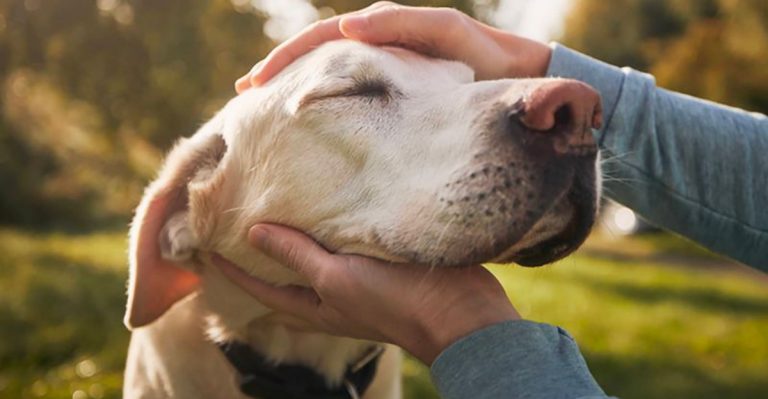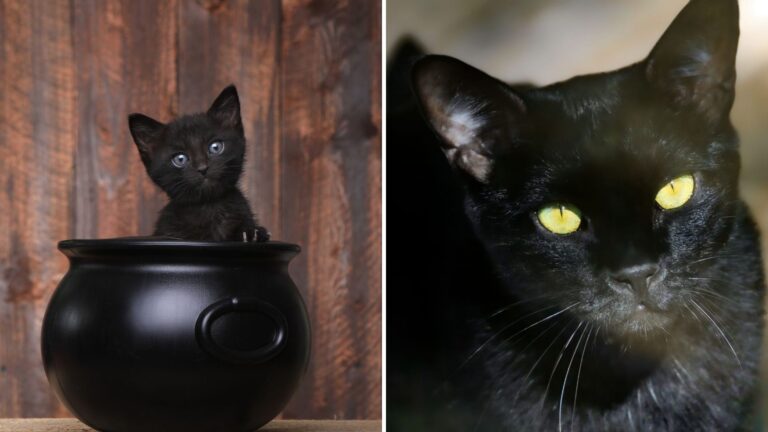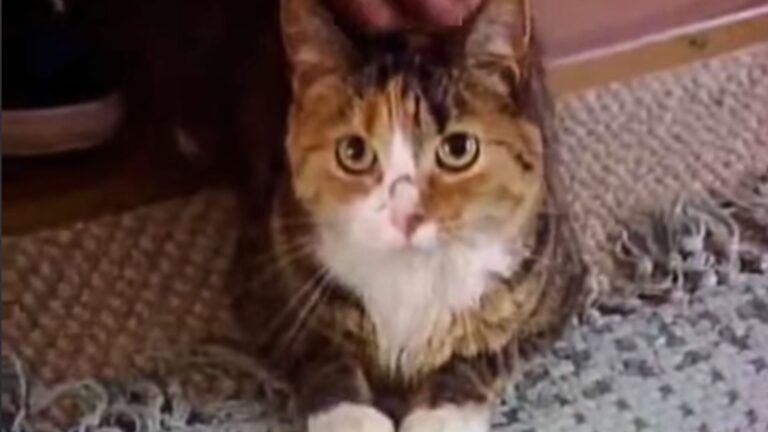Jacobson Organ: Cat Biology 101 – Pheromone Detection
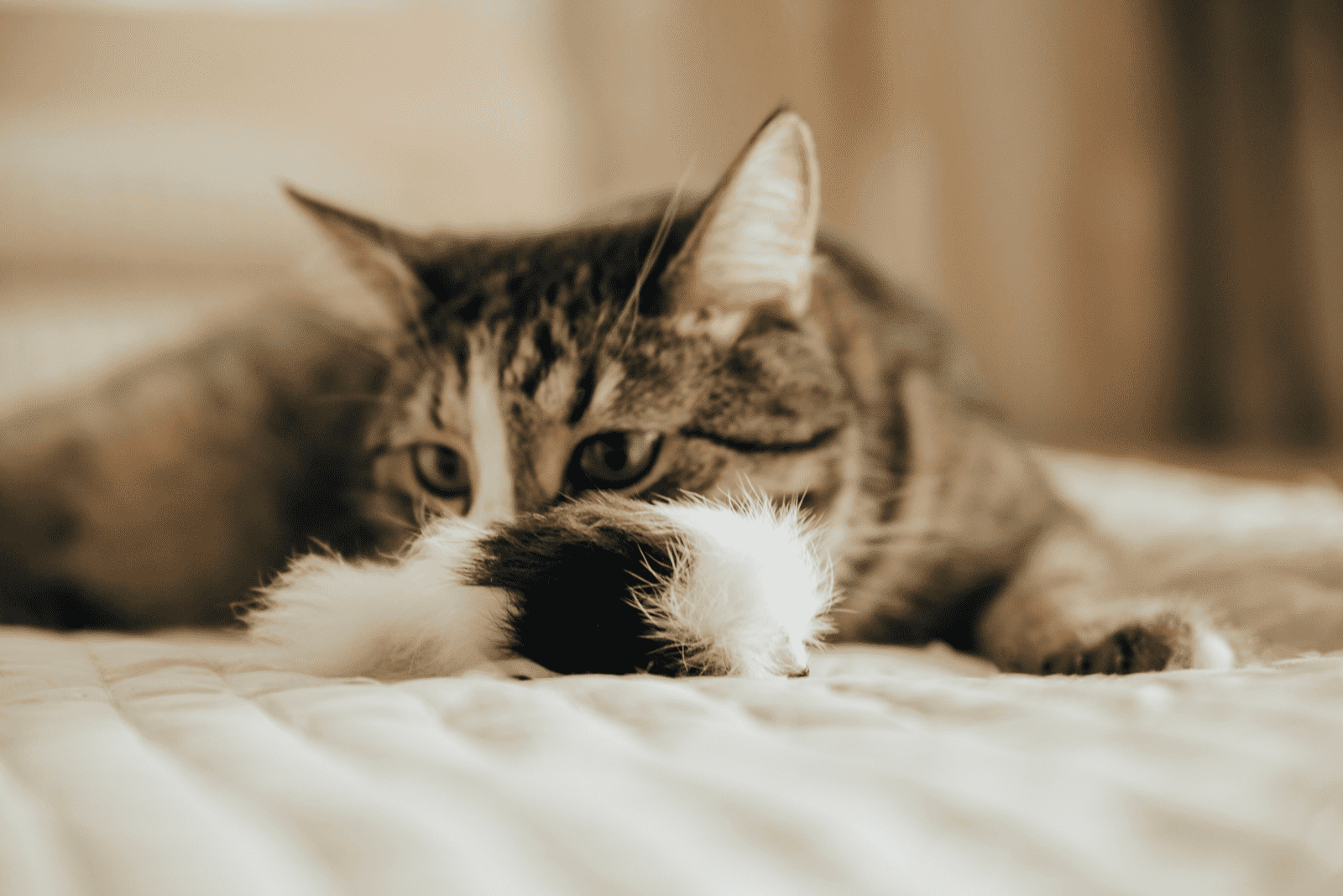
Cats have a much better sense of smell than humans and many other animals. This super sensitive sense is just one of cats’ many superpowers.
Cats don’t just receive information about scent through the nose – they also use an additional scent organ known as the Jacobson organ.
The Jacobson organ, also known as the vomeronasal organ, is crucial for a cat’s detection of pheromones in the environment around them.
Pheromones are taken into the cat’s mouth through the air. They are then analyzed by the Jacobson’s organ.
The action of making the air actually reach the Jacobson’s organ looks a bit weird. It is scientifically known as the Flehman response, but for many cat owners, it’s known as the stinky face.
If you have seen it, you will know exactly what I mean – it’s that face that looks as though your cat can smell something really stinky.
This weird cat behavior is actually very important for the cat – it allows crucial information about the presence of pheromones to reach the cat’s brain.
If you want to learn more about the Jacobson organ – where it is located, how it functions and why it is different from the cat’s olfactory tissue in its nose – just continue reading!
Jacobson Organ: Your Cat’s Superpower
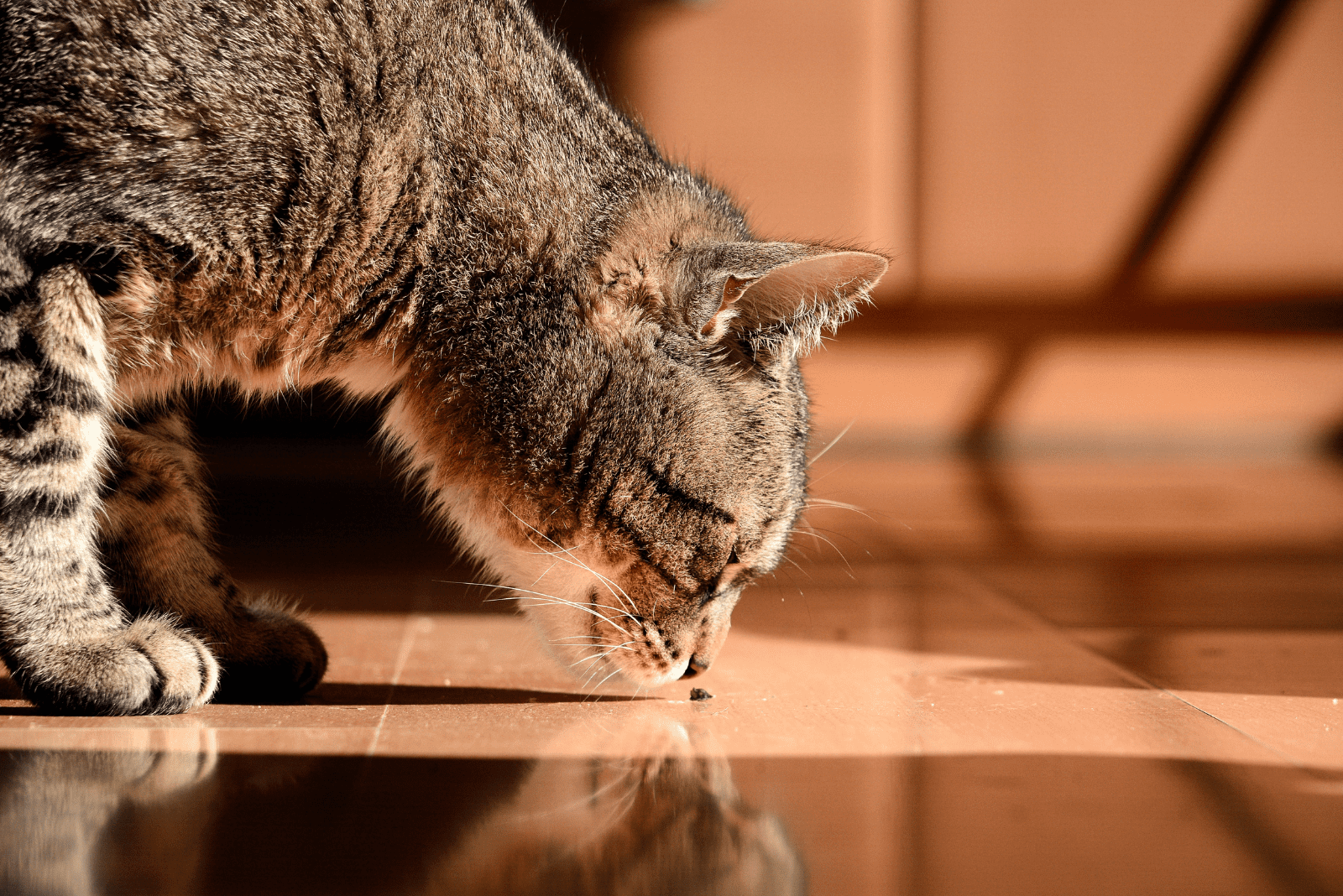
Cats have many superpowers, such as sensing bad energy, sensing when someone is sick, having extraordinary balance, being flexible and quick on their feet, and many more…Their amazing sense of smell has got to be on the list!
Jacobson’s organ and the olfactory tissue in a cat’s nose work in synchrony in order to give the cat as much smell-related information from their environment as possible. As you’ll see, this information is crucial for a cat’s understanding of the world around them, and for their wellbeing.
In this article, I won’t go into which smells do cats hate, and which ones they love. Instead, let’s go a little deeper and explore precisely how cats get their information through olfactory stimuli, particularly using the Jacobson’s organ.
What Exactly Is The Jacobson’s Organ (aka The Vomeronasal Organ)?
Jacobson’s organ, also known as the vomeronasal organ, is an organ found in the roof of the cat’s mouth and is sometimes referred to as the cat’s “scent analyzer”. This unique organ analyzes scents carried by the air in the cat’s mouth.
Cats are not the only animals that have this organ – lions, tigers, giraffes, goats, and even rhinos have it! It serves the same purpose in every animal – to provide them with crucial information about their environment.
It is known that at some point back in history, humans also had the Jacobson’s organ. However, during our evolutionary development, we lost it, probably because we did not have a lot of use for it. Nevertheless, it’s amazing to think that we once had this ability!
We have Ludvig Levin Jacobson to thank for the discovery of the Jacobson’s organ. He was a Danish anatomist who made this important discovery back in 1811.
Where Is Jacobson’s Organ Located?
In order to explain where exactly the Jacobson’s organ is located, I will give you two descriptions – a simple one and then a more precise, anatomical one.
Jacobson’s organ is located in the roof of their mouth, above the cat’s front teeth.
People often mistake the incisive papilla, a small lump of flesh behind the cat’s upper incisors, for the Jacobson’s organ, but they are not the same structures. However, they are connected, as you will see.
The more precise description of where this organ is located is between the hard palate of the mouth and the soft tissue of the nasal septum.
Now you know where this super scent analyzer is located!
How Does The Organ Function?
Let’s imagine a cat simply strolling around the garden and suddenly – it senses something strange. The cat in question will lower its head in order to fully inspect what’s going on.
The scent will be collected in the cat’s mouth and then the cat will flick the scent (using its tongue) into the Jacobson’s organ (the vomeronasal organ) via the incisive ducts.
It must be noted that cats use both the main olfactory system (the nose) and the accessory olfactory system (the vomeronasal organ) to detect and analyze scent. I will explain more about it below.
The Anatomy Of The Jacobson’s Organ
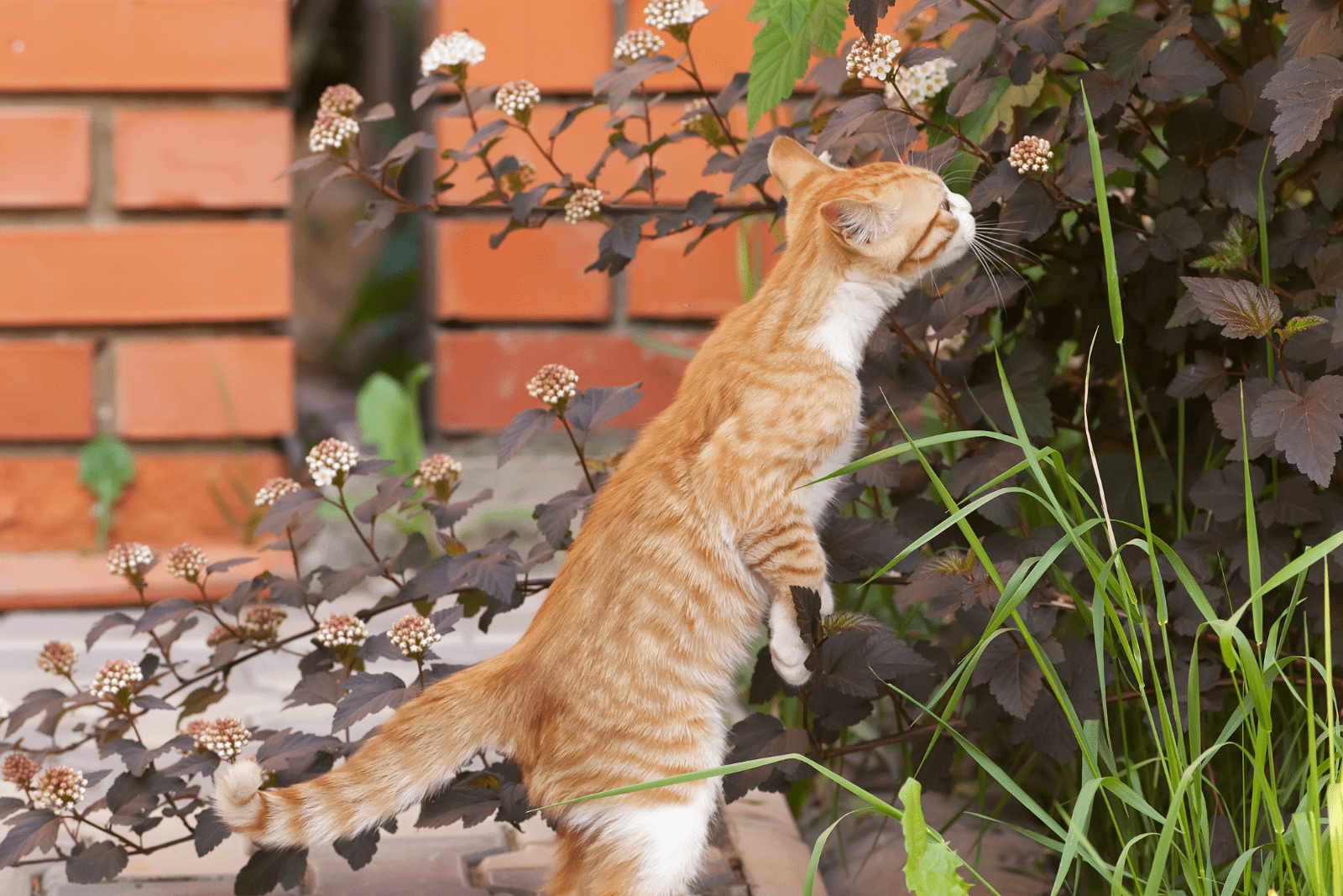
Jacobson’s organ (vomeronasal organ or VNO) is connected to the oral cavity via the incisive papilla (that fleshy structure behind the cat’s upper incisors). Incisive papilla is connected via the incisive duct which contains nasopalatine canals (canals that connect the nose and the palate).
This organ contains cell bodies of so-called sensory neurons, while the axons travel away from the Jacobson’s organ toward the cat’s brain. These sensory neurons have receptors whose function is to detect chemicals (such as pheromones) in the air.
Therefore, when a cat encounters a pheromone, the pheromone receptors of the Jacobson’s organ will bind it. This binding will trigger a signal that will travel towards the cat’s brain.
The signal will go to the accessory olfactory bulb which results in the activation of the amygdala and the hypothalamus. This activation triggers a behavioral response.
This is when a cat identifies that it has encountered a pheromone and it starts to change its behavior accordingly. For example, a male cat will act differently if it encounters a female cat’s sex pheromone than if it encounters a territory-marking pheromone from another neigbourhood tomcat.
Why Is Jacobson’s Organ Important To Cats?
Cats cannot use speech to communicate with each other (although that would be pretty cool!), so they rely on other forms of communication – body language and pheromones!
Body language is obviously detected via the sense of sight, but pheromones are detected using Jacobson’s organ. This enables cats to detect pheromone signals from their surroundings.
The cat then analyzes what these pheromones mean, and they use this information to understand their environment better.
What Could The Pheromones Mean?
Pheromones have two major functions, as described below.
1. Alert The Cat To The Presence Of A Fertile Female Cat
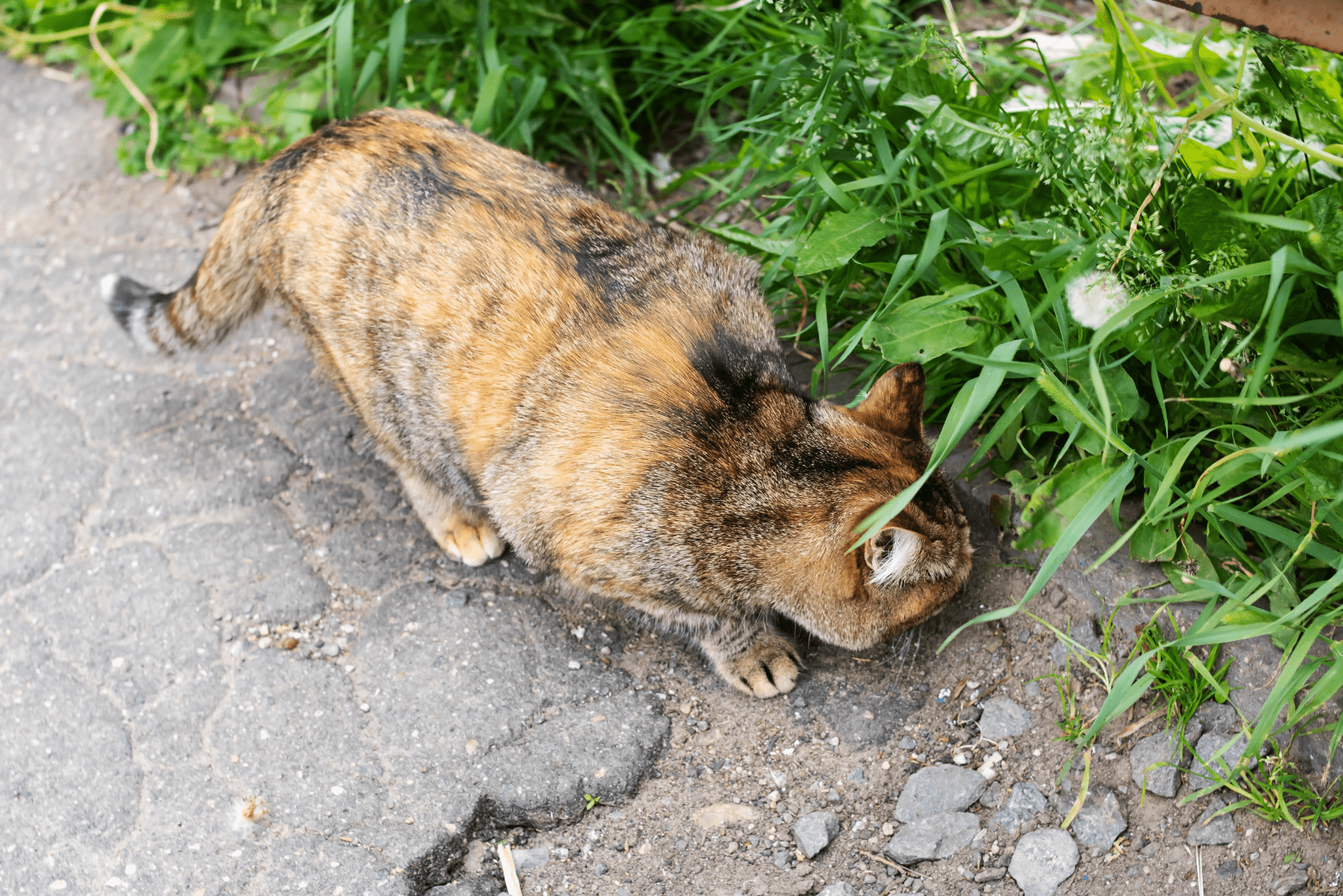
A male cat detects pheromones from a female cat’s urine that tell him that the female cat is ready to mate. This is important info for intact tomcats that have the urge to mate, but it is less intriguing for neutered male cats as they do not have the same hormonal response to female pheromones.
If you notice a female cat meowing and rubbing against everything, as well as raising her butt, these are clear signs she’s in heat. If there is an intact male cat around, he will definitely sense her pheromones via his Jacobson’s organ.
2. Alert Cats To Marked Territory
Although both male and female cats are territorial creatures, male cats tend to mark their territory more than female cats. Some male cats mark more than others – the more dominant the cat is, the more likely it is to mark its territory frequently.
Cats mark their territory by rubbing their bodies over surfaces, as well as spraying urine. Their bodies are covered in pheromone-producing glands, so when they rub themselves against things, the pheromones transfer onto the surfaces.
A cat’s urine also contains a lot of pheromones, which is why cats pee to mark their territory.
What Is The Flehmen Response (aka “The Stinky Face”)?
You might not have realized this, but you can actually see your cat is using its Jacobson’s organ!
A facial expression known as the Flehmen response is the tell-tale sign that your cat is using their vomeronasal organ.
We’ve all witnessed it: when your cat has been sniffing something really intriguing (like a sock), you notice that their mouth is gaping wide open, as if in astonishment.
The cat’s lips will be open and the top lip will be curved back. Your cat may appear to be recoiling in disgust, but in reality, the cat is only drawing back its upper lip to allow air to enter and pass to the vomeronasal region.
Some pet-owners call it the stinky face! If you’ve never seen a cat do the stinky face, check it out here:
What’s The Purpose Of This Funny Facial Expression?
No matter how funny your cat’s face might look when using their Jacobson’s organ – the funny face has a very important purpose!
The purpose of the Flehman response is to direct pheromones into the Jacobson’s organ!
This is an efficient way to make the scent (the pheromones) travel towards the roof of the mouth, where the vomeronasal organ is.
The only way for pheromones to be detected is by the receptors found within this organ.
It is very important they actually get to their destination, and the Flehman response does exactly that – it directs the pheromones so they reach their end destination where they can be analyzed.
A Cat’s Sense Of Smell: Jacobson Organ Vs Cat’s Nose
You might be confused about the function of the Jacobson’s organ versus the function of a cat’s nose, so let’s clear it up!
Cats (and many other vertebrates, but not humans) have:
• The main olfactory system
• The accessory olfactory system
Jacobson’s organ (vomeronasal organ) is the part of the accessory olfactory system that contains the sensory receptors used to detect the presence of pheromones.
The main olfactory system is the cat’s nose. Sensory neurons in the nasal cavity are responsible for detecting smells, and these are also involved in the perception of flavor.
It is important to note that both the primary olfactory system and the accessory olfactory system are capable of detecting pheromones. However, the accessory olfactory system is the more effective of the two.
FAQ
Do House Cats Have the Jacobson Organ?
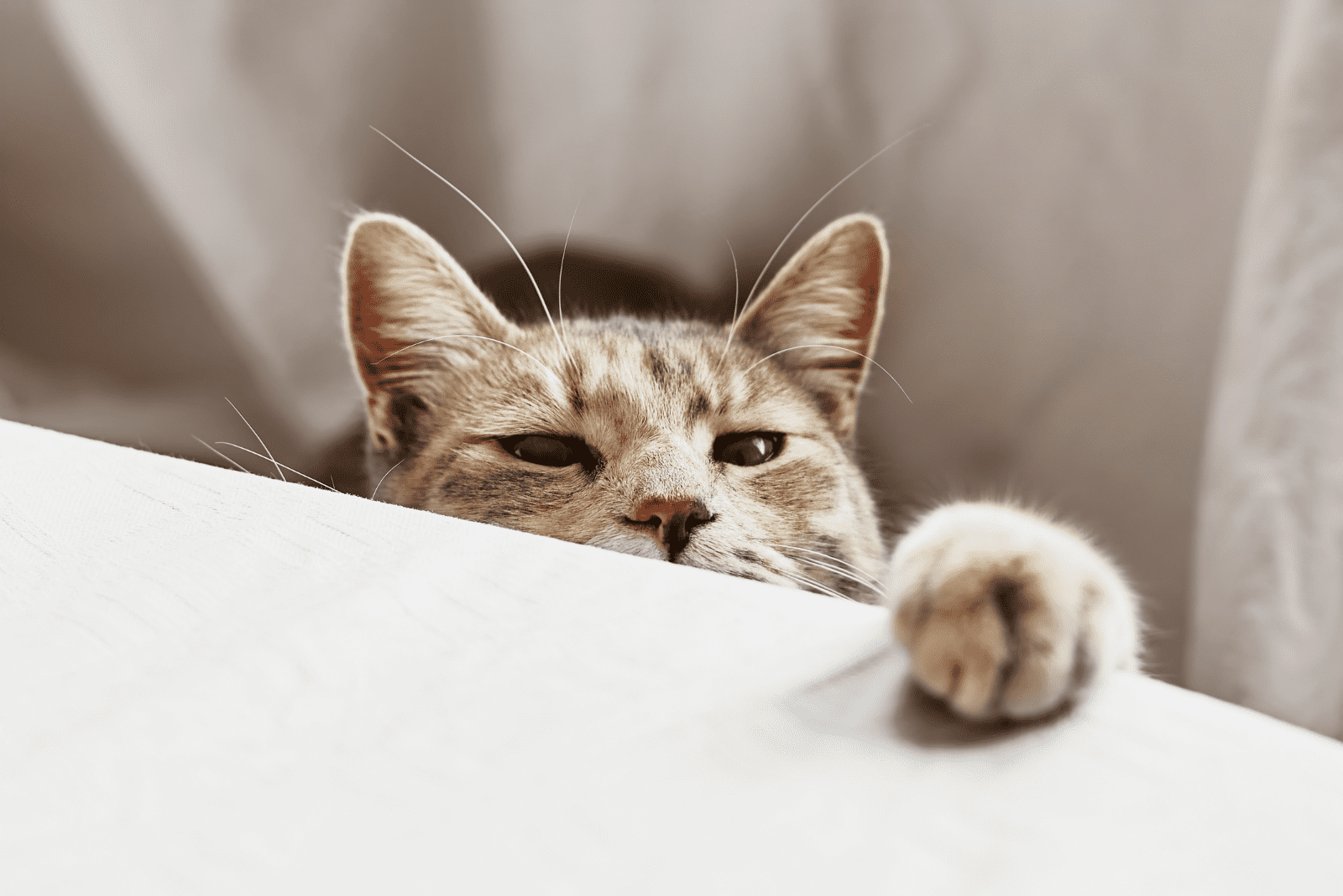
Yes, every domestic cat and wild cat has the Jacobson organ. It is not specific to any particular cat breed, or cat age – every cat is born with it! This organ does the very important job of detecting the presence of pheromones.
If a cat did not have the Jacobson organ, they would not be able to fully detect a female cat in heat, identify territory marked by another cat, or learn information about other cats in their proximity. So, as you can see, this organ is very important for every cat.
Why Does My Cat Sniff Something Then Open His Mouth?
This is called the Flehmen response. What has happened here is that the cat noticed an interesting scent and came to inspect it in detail by sniffing it.
The cat then opened his mouth so that the air that carries the scent (potentially containing pheromones) can come towards his Jacobson organ. It’s very important for the pheromones to reach this organ in order to be detected and interpreted by pheromone-specific receptors.
This is why your cat opens his mouth after sniffing something – so that the air that carries the pheromones can reach the Jacobson’s organ (vomeronasal organ).
Why Do Cats Make A Weird Face After Smelling Something?
What you’re talking about here is the classical stinky face that cats do. It’s not just a funny face – there is a purpose behind it. What your cat is actually doing is letting a scent reach its Jacobson’s organ so they can analyze it.
I admit, their facial expression while they’re doing this is a bit weird, but it serves a very important purpose!
What Does It Mean When A Cat Sneers?
When your cat shows a funny face that looks a little like a sneer, it means your cat is sniffing out the pheromones in its environment.
This is called the Flehmen response, and it’s a very important process for a cat because it is a way to learn about what’s happening in its surroundings – for example, identifying if there are any female cats around or other territorial cats to be wary of.
Is A Cat’s Sense Of Smell As Good As A Dog’s?
It is known that dogs have a significantly higher number of odor-sensitive olfactory receptor cells in their nose compared to cats. This is why some people say dogs have a better sense of smell than dogs.
On the other hand, some say cats have a better sense of smell because, even though they have a smaller number of smell-receptors, they are more diverse. This means that cats have a more sensitive sense of smell, because they’re able to distinguish between a large number of different odors.
In Conclusion
Cats get a lot of olfactory stimuli from their environment; olfactory stimuli provide a lot of information about a cat’s environment. In fact, the cat’s entire olfactory system helps a cat to survive.
A crucial part of that olfactory system, apart from olfactory epithelium in the cat’s nose , is the Jacobson organ: the cat’s superpower! This organ has the ability to detect pheromones, if any pheromones are present.
When a cat sniffs something, you might notice them making a funny face as if they just smelled something bad. There is a name for that reaction – Flehmen’s response. However, your cat’s weird facial expression plays a very important role in making sure the air that contains the pheromones reaches the cat’s Jacobson’s organ!
This might change the way you view your cat’s weird facial expressions – sometimes, they are a display of a very important process for the cat!
Now you know everything there is to know about your cat’s sense of smell and how the Jacobson’s organ helps them learn about their environment. Now go and spread the knowledge!



